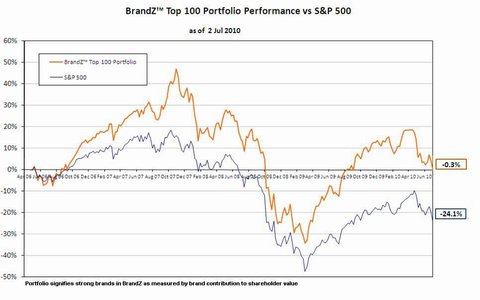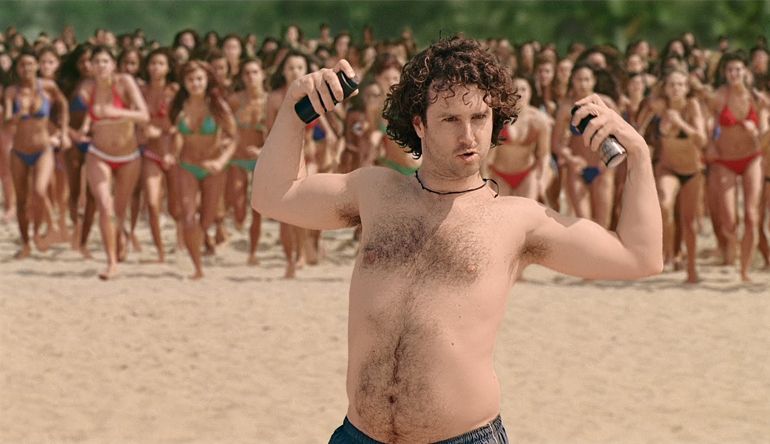Creative accounting that's legal: marketing drives profits
The Lynx effect: Marketers need to help business managers focus on the long term.
Yes, the world is experiencing rapid change and it’s accelerating. However with the average tenure of management in companies constantly getting shorter, retained knowledge is being lost and long term plans are often abandoned before they have a chance to deliver returns. Short termism is rife, sales managers will always tend towards a quick fix to get orders in this month, and financial controllers will naturally be looking for new ways to reduce spending.
Yet the bottom line is it's the businesses that invest year after year in building brands that create the most wealth. The chart below compares the S&P 500 index performance, the blue line, with businesses that own stronger brands, the green line. It proves the businesses that invest in brand building ultimately generate more wealth for shareholders.

Leading brands outperform the sharemarket
A great example of how building a brand over time makes more money is to look at the work BBH in London did for Unilever. The creative leap of saying a deodorant could make a man more attractive changed the dynamics of the market category. The ad agency took an also ran product to a profit powerhouse over 20 years with the one consistent creative idea; “The Lynx effect”.

Founder of BBH Sir John Heggarty says “All we did [back in 1995] was change the thinking. It’s more than a fragrance – anyone can make a fragrance – it’s actually about the marketing.”
"I fundamentally disagree that advertising is just selling people stuff they don’t want. I believe that you have to create a competitive advantage with creativity. It seems obvious but I spend so much of my time trying to convince marketers to be more creative.”
Marketing is more art than science says the global advertising guru
Last week in Sydney Heggarty told a room full of businesspeople and advertisers “you all want it to be a science, to get the equation right and go home. But selling stuff has never been a science, it’s about persuasion and it’s an art. It will never be a science. It’s important to remember that we’re all creative. If you’re in marketing, you’re creative.”
Branding today is worth more to a business than ever before
Here is the proof for the finance department. According to Millward Brown Optimor’s analysis, in 1980 virtually the entire value of an average S&P 500 company was comprised of tangible assets (computers, factories, inventory, etc). By 2010, tangible assets accounted for only 30 to 40 percent of a company’s value. The rest is intangible value, and about half of that intangible portion, close to 30 percent of total business value, is attributed to brands. Does your CFO treat your own brand as your single biggest asset?
It truly is the era of creative destruction. ROI marketing is one of the few tools left that can still make a difference and consistently drive business growth. It's worth investing in your brand if you want long term returns.




Scan the QR code for our contact details.
Download the Neoreader app.
© COPYRIGHT 2013 UNO marcomms Privacy